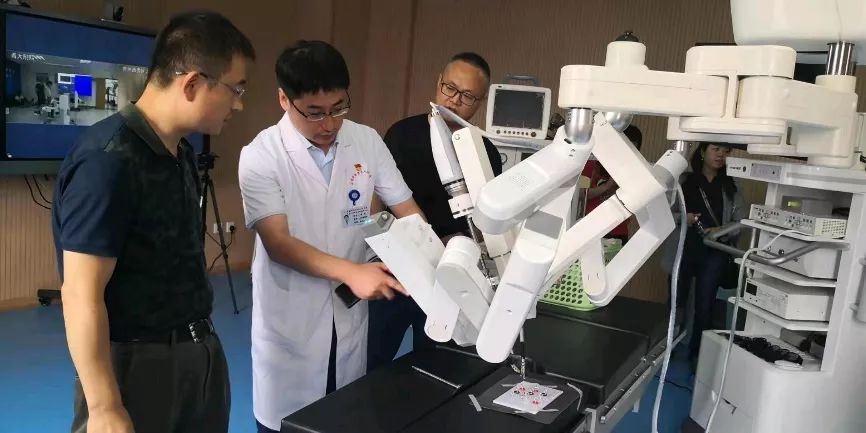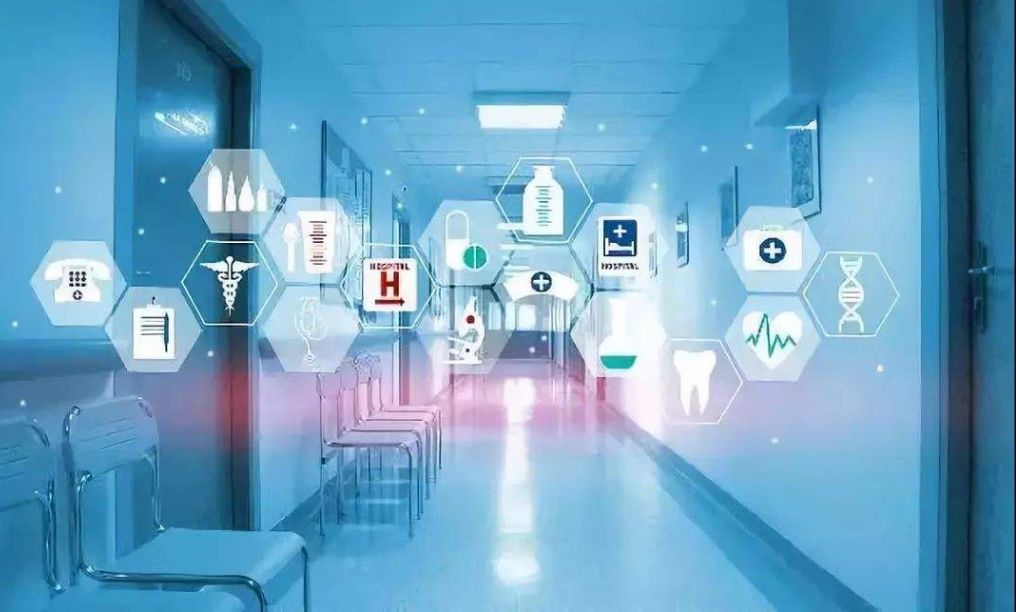5G Robot Surgery: Bridging the Gap Between Sci-Fi and Reality
Have you ever imaged walking into a tunnel through space and time and seeing a tidy ward of the future? A robot doctor is examining humans, scanning databases to issue prescriptions, and arranging and performing surgery…
Whether or not you have ever imagined such a scene, it is one that will soon become common.
Humanity has long held onto the idea that one day, robots would be able to understand, infer, and learn, helping us defeat diseases and save lives. This idea is often reflected in science fiction, from Isaac Asimov's novels in the 1950s and Tricorders seen in Star Trek, to the heartwarming healthcare robot Baymax in Big Hero 6…

Currently, 5G is being adopted for commercial use faster than ever before, making breakthroughs in the healthcare sector. Built on a strong foundation of networks, 5G is integrating AI, big data, IoT, and other new technologies to enable smart healthcare. 5G smart healthcare is arriving in full force, leading to the creation of many new applications, from 5G remote group consultation and 5G emergency rescue command, to 5G smart hospital and 5G smart healthcare models.
And now, China has created the world's first 5G long-distance robot.
On September 7, 2019, Niu Haitao, deputy head of the Affiliated Hospital of Medical College Qingdao University, led a team performing remote microsurgery on animals at the People's Hospital of Xixiu District in Anshun (Guizhou) from 3,000km away. This marks the longest-distance surgery ever performed in China, and was made possible thanks to China's latest intelligent medical perception and interaction technology, 5G networks provided by China Unicom and Huawei, and the three-armed medical robot system developed by Weigao Holding.

Long-distance robot enabled by 5G
Surgery in Qingdao, Shandong

Long-distance robot enabled by 5G
Surgery in Anshun, Guizhou
During 5G remote surgery in the past, doctors could only provide or receive guidance. However, this surgery used 5G that offers both high bandwidth and low latency. This meant that doctors at the far end could control the robotic arms to perform surgery on soft tissues, while the robotic arms at the near end could precisely replicate the doctor's operations in real time. This ensures surgery is successfully performed on the targeted body part.
To ease concerns over the security and stability of remote surgery, this surgery simulated possible network emergencies for the first time, such as signal interrupts and network attacks. The results showed that 5G networks are secure and reliable enough for remote surgery. This surgery also provided valuable inputs for developing standards in the remote healthcare industry.

The combination of 5G and advanced medical equipment will enable the healthcare industry to go digital.
Since the beginning of 2019, 5G has closely interacted with the healthcare industry. This has been seen in multiple use cases such as remote diagnoses, mobile ward rounds, and the live streaming of surgeries.
The success of the long-distance surgery verified the feasibility of remote surgery being performed by intelligent robots, and showed the key role 5G will play in Internet+ smart healthcare. In the future, 5G-enabled remote surgery will improve the quality of medical services and support the implementation of a hierarchical medical system.

5G is on. With the support of partners like Huawei, China Unicom is actively using 5G to enable vertical industries. China Unicom Shandong and Guizhou, for example, have worked with several major companies in key industries to build 5G joint labs and form 5G industry ecosystem alliances. Together, they aim to advance 5G technological innovations and industry development, and enable all industries to go digital. This includes smart broadcasting and television, smart healthcare, intelligent manufacturing, intelligent & connected cars, smart grids, and drones.
"In the future, we are likely to see AI diagnose diseases and doctors cure these diseases," said Zhong Nanshan, academician of the Chinese Academy of Engineering.
With 5G, we can make bolder steps towards smart healthcare and develop more new technologies and use cases that will benefit everyone. Our ultimate goal is to bridge the gap between science fiction and reality, make digital lives a reality, and build a fully connected, intelligent world.